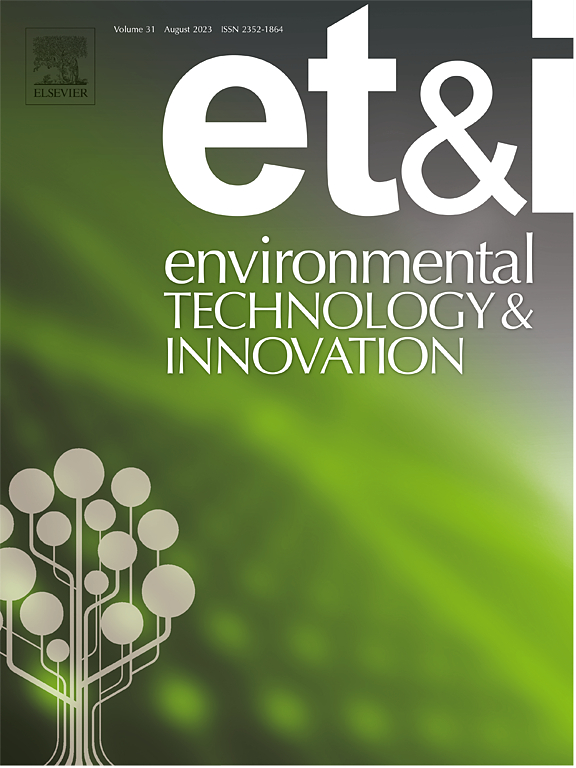The impacts of aeration modes and rates on nitrogen conversion and bacterial community composition in a 90-m3 silo composting reactor
IF 6.7
2区 环境科学与生态学
Q1 BIOTECHNOLOGY & APPLIED MICROBIOLOGY
引用次数: 0
Abstract
The silo composting reactor is applicable for the in-situ treatment of organic waste. Ensuring an adequate supply of oxygen can enhance the compost maturity. This study investigated the effects of aeration modes and rates on composting effectiveness and nitrogen conversion. The 24 h uninterrupted aeration mode (K60T0) was conductive to achieving an elevated temperature of 78 °C. The germination index value in the lower layer consistently exceeded 80 % with different aeration modes. The content of total nitrogen (excluding K60T0) and ammonia nitrogen increased progressively with the increase of aeration time. Meanwhile, nitrate nitrogen content exhibited fluctuations, with the lowest content observed in the middle layer. An aeration cycle of 50 min followed by a 10-min pause within an hour resulted in the highest amide nitrogen content of 5.93 g/kg and organic nitrogen content of 2 % in the upper layer. The dominant phylum and genera were Firmicutes and Ureibacillus, respectively. The relative abundance of Firmicutes initially decreased and then increased in general with prolonged aeration time. Additionally, the extension of aeration time altered the nitrogen cycling function within the reactor.
90-m3筒仓堆肥反应器曝气方式和曝气速率对氮转化和细菌群落组成的影响
筒仓堆肥反应器适用于有机废弃物的原位处理。保证充足的氧气供应可以提高堆肥的成熟度。研究了曝气方式和曝气速率对堆肥效率和氮转化的影响。24 h不间断曝气模式(K60T0)有助于实现78 °C的高温。不同曝气方式下,低层萌发指数值均超过80 %。随着曝气时间的延长,总氮(不含K60T0)和氨氮含量逐渐增加。同时,硝态氮含量呈波动趋势,中层含量最低。曝气周期为50 min, 1小时内暂停10 min,上层酰胺氮含量最高,为5.93 g/kg,有机氮含量最高,为2 %。优势门和优势属分别为厚壁菌门和Ureibacillus。随着曝气时间的延长,厚壁菌门的相对丰度先降低后升高。另外,曝气时间的延长改变了反应器内的氮循环功能。
本文章由计算机程序翻译,如有差异,请以英文原文为准。
求助全文
约1分钟内获得全文
求助全文
来源期刊

Environmental Technology & Innovation
Environmental Science-General Environmental Science
CiteScore
14.00
自引率
4.20%
发文量
435
审稿时长
74 days
期刊介绍:
Environmental Technology & Innovation adopts a challenge-oriented approach to solutions by integrating natural sciences to promote a sustainable future. The journal aims to foster the creation and development of innovative products, technologies, and ideas that enhance the environment, with impacts across soil, air, water, and food in rural and urban areas.
As a platform for disseminating scientific evidence for environmental protection and sustainable development, the journal emphasizes fundamental science, methodologies, tools, techniques, and policy considerations. It emphasizes the importance of science and technology in environmental benefits, including smarter, cleaner technologies for environmental protection, more efficient resource processing methods, and the evidence supporting their effectiveness.
 求助内容:
求助内容: 应助结果提醒方式:
应助结果提醒方式:


